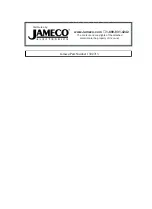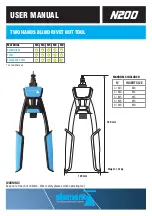
Model t10222 (Mfg. since 12/09)
-11-
— if the outside edge of the router table tilts
up, place strips of masking tape along the
top edge of the saw table to shim the router
table down and even with the saw table
from side to side (see
figure 12).
Note:
After reinstalling the router table,
remove all excess masking tape with a razor
blade.
Tape
figure 12. Masking tape to ship the table down.
10. place the fence assembly over the studs of
the t-slot bars, then secure the fence in place
by threading the knurled handles onto the
studs, as shown in
figure 14.
figure 14. Knurled fence handles installed.
Knurled Fence handles
8
. When the saw and router tables are level with
each other, rotate the foot pad assembly so
that it sits firmly on the floor without changing
the height of the router table. tighten the jam
nut of the foot pad assembly up to the leg
bottom to secure the setting.
9. slide the two t-slot bars into the t-slots of
the router table (see
figure 13).
Note:
The router table double-cross T-slots
offer two different orientations for the router
fence—choose the one that best suits your
operation.
figure 13. t-slot bars installed.
t-slot
Bars
Note:
The two fence board shims provided
with your router table can be placed between
the outfeed fence board (left) and the fence
to offset the outfeed fence board for full edge
routing (see the illustration in
Figure 15
and
refer to
Edge Routing
on
Page 16
for addi-
tional details).
With additional shop-made shims, the outfeed
fence board can be offset up to approximate-
ly 4mm from the infeed board. If you require
more offset, you can obtain longer M6-1 flat
head screws to secure the outfeed fence
board.
Shims
Outfeed
Fence Board
Fence
figure 15. shim installation for full edge routing.














































